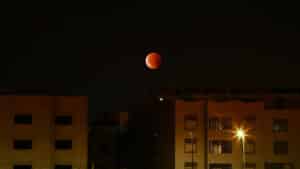“Then the cloud covered the tent of meeting, and the glory of the LORD filled the tabernacle. Moses was not able to enter the tent of meeting because the cloud had settled on it, and the glory of the LORD filled the tabernacle…. Then the He called to Moses and spoke to him from the tent of meeting…. Moses and Aaron went into the tent of meeting. When they came out and blessed the people, the glory of the LORD appeared to all the people…. Then fire came out from before the LORD and consumed the burnt offering and the portions of fat on the altar; and when all the people saw it, they shouted and fell on their faces” (Exod 40;34-35; Lev 1:1a; 9:23-24).
As is so often the case, an essential skill for interpreting biblical narrative is an eye for parallels to earlier narratives within the larger context of the storyline. There is no mistaking the parallels between the LORD’s spectacular appearance to Moses on the summit of Mount Sinai with the final verses of Exodus and the introduction to Leviticus. The cloud of God’s glory settles upon the top of the mountain (Exod 24:15; 40:34); Moses is unable to enter into the summit of the LORD’s glorious presence (Exod 24:16a; 40:35); the LORD calls out to Moses from the midst of his glory (Exod 24:16; Lev 1:1); and after a period of waiting, Moses finally enters into the consuming fire of God’s presence (Exod 24:17-18; Lev 9:23-24). Exodus 24:15-18 is Exodus 40:34 — Leviticus 9:24 in a nutshell! There are, no doubt, essential differences between both narratives. In Exodus 24, God’s sanctuary is a stationary mountain; in Exodus 40, God’s sanctuary is a mobile tent. In Exodus 24, Moses enters into the cloud of God’s glory alone; in Leviticus 9:23, Moses enters into God’s presence with Aaron.
The author clearly wants us to regard the tabernacle as the new Mount Sinai, a place where God dwells, a place where God speaks and reveals himself, a place that is altogether and entirely holy. God does not want the Israelites to reach the faulty assumption that he lives in the desert far away from the Promised Land. No need for the Israelites to make pilgrimages. Rather, he wants them to know that he is just as present, just as real, just as glorious, just as holy in the tabernacle as he was on Mount Sinai. All of God’s glory clothed in the skins of animals.
God’s Presence With Us
And so it is when all of God put on the skin of a human being.
God wants us to understand Yeshua as the new Mount Sinai, a person where God dwells, a person where God speaks and reveals himself, a person who is altogether and entirely holy.
No need to make pilgrimages to distant lands because in Christ, all of God is present and he said he would never leave or forsake us (Matt 28:20). He is just as real and just as glorious with his people in Kyiv or Kentucky as he was two thousand years ago when he walked the streets of Jerusalem. No doubt a trip to Israel is something all believers should experience, but for the elderly Christian widow living in Katmandu who hasn’t a shekel to her name, the enjoyment of God’s presence is not less accessible because the God of Israel chose to live and reveal himself to God’s people in a person, and not in some far off and distant place.
“For in Him all the fullness of Deity dwells in bodily form, and in Him you have been made complete” (Col 2:9-10a).










